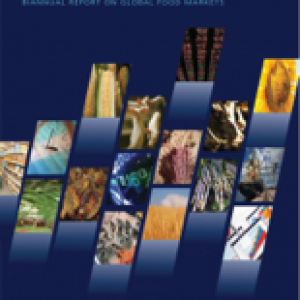
The FAO’s 2013 report this time includes a special section on quinoa. The year 2013 has been declared “International Year of Quinoa” by the United Nations General Assembly, a tribute to a little-known agricultural product with outstanding nutritional and agronomic properties grown almost exclusively in the Andes.
The report notes the following:
As quinoa production and trade systems are undergoing profound changes, reflecting a shift from a traditional crop, primarily produced for own consumption, to a globally traded commodity, several issues have emerged that require attention. First is the question of whether traditional quinoa producers will remain the main beneficiaries of the crop’s growing popularity in the coming years. A second concern has to do with the level of prices that quinoa producers may receive over the medium term. Since the mid-2000s, the strong growth in revenues generated by quinoa exports has benefitted the economies in the producing countries as a whole, as well as traditional quinoa growers, who have seen producer prices rise rapidly. With production expanding, this state of play may change rapidly, which could eventually trim much of the benefits currently reaped by Andean quinoa producers. From the government policy perspective, it will be important in the coming years to guide and support the process of reorientation of the sector from a traditional, subsistence crop to an export-oriented cash product, so as to ensure that quinoa growers and their families benefit from the dynamic world demand. A final concern relates to the possible negative impacts of surging local prices on the nutritional status of the indigenous Andean populations. Because producer prices have increased along with export prices, poor households have been enticed to replace quinoa with less expensive, but nutritionally inferior, food products, such as bread, pasta or rice.
Quinoa is still a relatively new product in the international markets, with vast potential for production and trade expansion. World demand is expected to keep growing vigorously in the coming years, driven primarily by developed countries, where expenditure on healthier and natural foods is on an upward trend. In other parts of the world, there is interesting potential for introducing quinoa as a new crop, given its resilience and low water requirements, and several governments have expressed interest in exploring this option. In the future, quinoa could play a more important role in the global food system, given its adaptability to different agro-ecological regions and superior nutritional qualities. However, in the short term, the high price of this product, which has thus far catered to the niche market of health-conscious consumers in high-income countries, will preclude the expansion of consumption in poor countries. Given the current export price of over USD3,000 per tonne, quinoa cannot compete with other food crops such as rice, which is quoted approximately five times lower on international markets. In the short run, the growing consumption in developed countries will continue to be satisfied by exports from Bolivia and Peru. In the longer term, productivity increases are expected to take place not only in the Andean producing countries but also in the new producing areas, where investments are being made to cultivate the crop for commercial purposes. The current plans to expand quinoa production are expected to translate into much larger world supplies and declining prices at the producer, consumer and international levels, which may alter the current dynamics driving the crop. However, it remains to be seen whether quinoa will ever become a major and world-wide staple.
You can download the report here.
And an article covering the quinoa issue can also be found here.







Post a new comment »